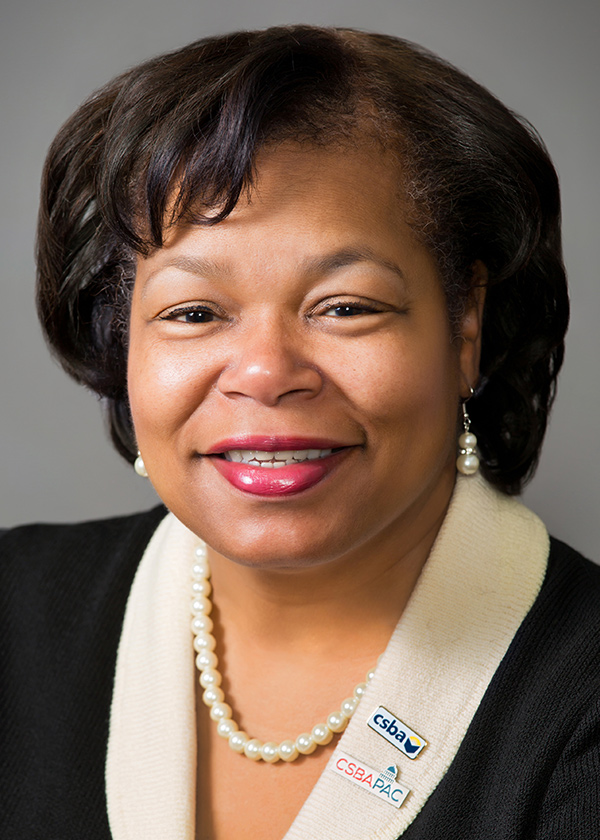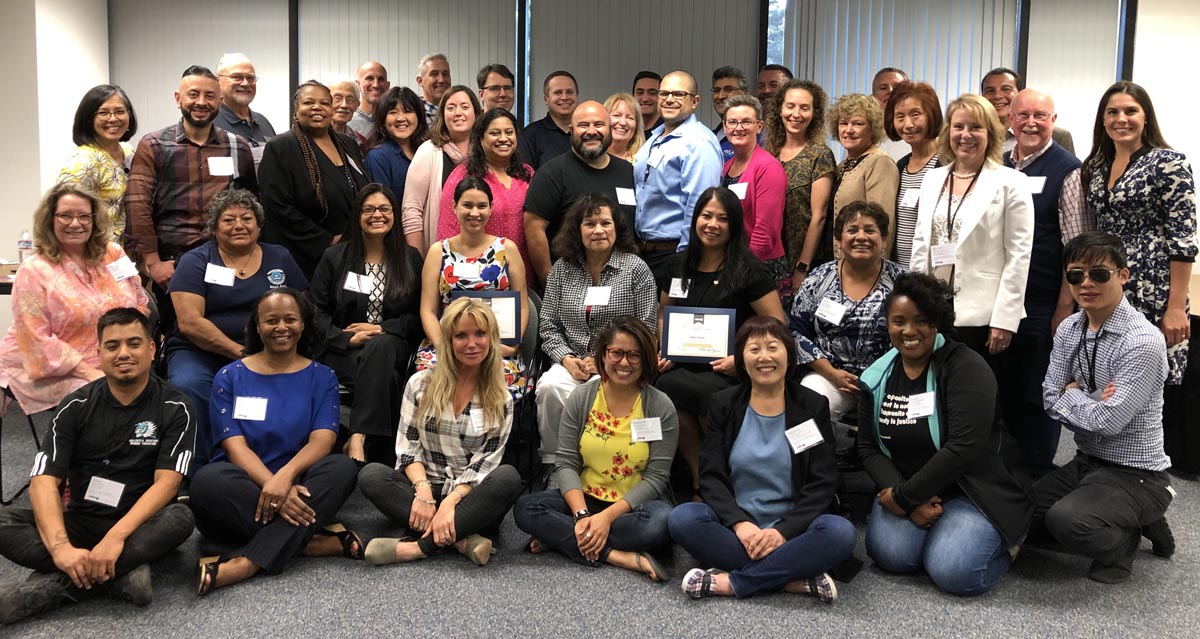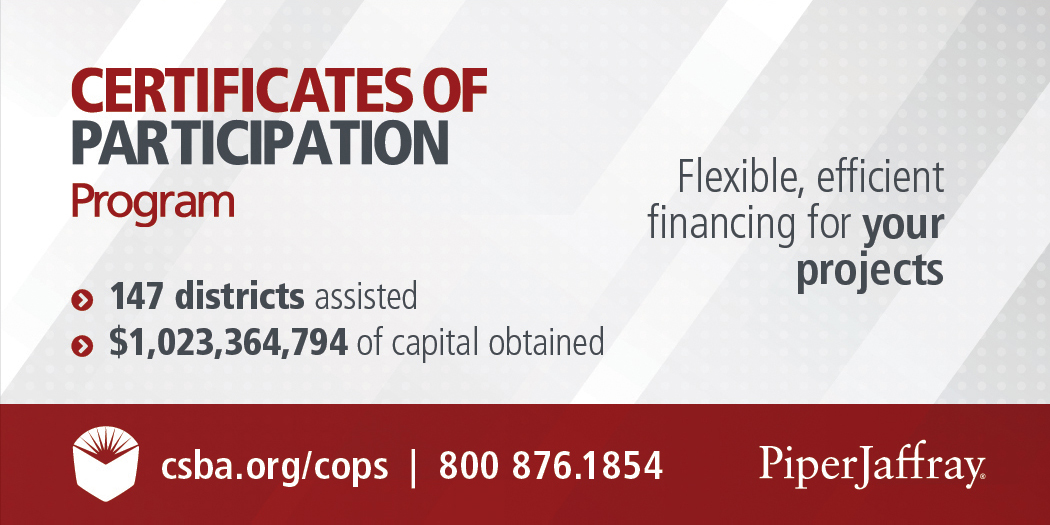

Senate Bill 328, which would prohibit all non-rural middle and high schools in the state from starting the regular school day before 8 a.m. (middle schools) or 8:30 a.m. (high schools), passed the Assembly Education Committee on July 10 with a 4-1 vote (two members declined to vote) and was sent to the Assembly Appropriations Committee, where it awaits a hearing. If approved by that committee, the bill would be sent to the Assembly Floor.
CSBA remains opposed to SB 328, as the decision regarding school start times should be made locally, based on the needs of students and families in their own communities.
Assembly Bill 1505, which remains a work in progress leading into the final weeks of the legislative year, would make substantial changes to processes governing charter school petitions and renewals. Amendments made on July 5 reflect several recommendations made by CSBA’s Charter Schools Task Force in its 2018 Uncharted Waters report, as well as priorities of Gov. Gavin Newsom’s administration.
- Visit www.csba.org/Newsroom for links to digital versions of current and past issues of California School News.

For many board members in 2019, this includes communicating with constituents through social media, including Facebook, Twitter and other online spaces. Social media can be a useful way to communicate with constituents, but board members should be aware that operating a social media account as an elected official can create limitations on their ability to regulate comments on their accounts. Board members who wish to discuss district business on their social media accounts and allow comments from the public should take care to allow all comments, even critical ones, and avoid blocking users or regulating comments based on the viewpoint expressed.
For school districts that have district-sponsored social media accounts, CSBA’s sample Board Policy 1114 contains guidance on content and privacy issues for districts. When the district allows the public to post comments on district-sponsored social media accounts, they may create a “limited public forum,” which grants individuals certain freedom of speech rights and limits the district’s ability to remove comments or posts from members of the public. Districts must therefore ensure that any removal of content is done in a “viewpoint-neutral” manner — in other words, the district cannot remove comments from the community that they disagree with, while leaving more positive comments up on the site.

Troy Flint | tflint@csba.org
Managing Editor:
Kimberly Sellery | ksellery@csba.org
Marketing Director:
Serina Pruitt | spruitt@csba.org
Staff Writers and Contributors:
Andrew Cummins | acummins@csba.org
Aaron Davis | adavis@csba.org
Mike Ambrose | mambrose@csba.org
Barbara Laifman | blaifman@csba.org
Graphic Design Manager:
Kerry Macklin | kmacklin@csba.org
Senior Graphic Designer:
Mauricio Miranda | mmiranda@csba.org
Emma Turner | La Mesa-Spring Valley SD
President-elect:
Xilonin Cruz-Gonzalez | Azusa USD
Vice President:
Tamara Otero | Cajon Valley Union USD
Immediate Past President:
Mike Walsh | Butte COE
CEO & Executive Director:
Vernon M. Billy
News and feature items submitted for publication are edited for style and space as necessary.


The subject of supporting hard-to-reach students has weighed on my mind since I read The Effect of School Discipline on Offending across Time, a study led by Bowling Green University sociology professor Thomas Mowen. Mowen and his co-authors found that out-of-school suspensions increase the likelihood that the suspended students would commit another infraction or crime and that the subsequent offense would be more severe. In effect, rather than serving as a deterrent, suspensions were increasing the prospect of bad behavior and propelling students toward more serious transgressions. The study concluded that, “Despite some limitations, findings from this study demonstrate that school discipline can serve as an important turning point during adolescence … and can present a cumulative effect that substantially amplifies deviance as youth move through adolescence and into emerging adulthood.”

Adrian Perez, Board President, Mendota USD; Quiauna Scott, Superintendent, Emery USD; Liz Monti-Hall, Board Member, Sunol Glen USD; Stephanie Fitch, Board Member, Ravenswood City ESD; Katherine Tseng, Board President, Los Gatos-Saratoga Jt. Un. HSD; Tamara Sobomehin, Board President, Ravenswood City ESD; Michael Tsai, Board Member, Milpitas USD
Second Row: Left to Right
Shane Reinhart, Board Member, John Swett USD; Joetta Fleak, Board Member, Madera USD; Angelann Flores, Board Member, Stockton USD; Candelaria Vargas, Board Member, Stockton USD; Mina Richardson, Board Member, South San Francisco USD; Kelly Chuan, Board Member, Milpitas USD; Lucy Salazar, Board Member, Madera USD; Mary Ann Dewan, Superintendent Santa Clara COE (not a MIG graduate)
When an orientation is set up with intention, it can serve as the first step to the onboarding process for incoming board members. Boards may consider discussing the following guiding questions when preparing to host a candidate orientation:
- What will candidates learn as a result of participating in the orientation?
- How will the information shared at the orientation better prepare candidates for a governance role within our district or COE?
- What is the essential information about our district or COE that is critical for a candidate to know before taking office? What is the most effective way to present this information?
- What is the essential information about governance and governance roles and responsibilities that is critical for candidates to know? What is the most effective way to present this information?
- What are the resources from our local COE and partners, such as CSBA, that can be included?
- What will candidates learn as a result of participating in the orientation?
- How will the information shared at the orientation better prepare candidates for a governance role within our district or COE?
- What is the essential information about our district or COE that is critical for a candidate to know before taking office? What is the most effective way to present this information?
- What is the essential information about governance and governance roles and responsibilities that is critical for candidates to know? What is the most effective way to present this information?
- What are the resources from our local COE and partners, such as CSBA, that can be included?

Nominations for CSBA Directors-at-Large African American, American Indian and County are being accepted through Saturday, Oct. 5, 2019. Directors-at-Large play an important role at CSBA, helping shape policy and set organizational direction. Nominations must be made by a CSBA-member board of education. Nominees must submit a candidate statement and two letters of recommendation by Friday, Oct. 11.
CSBA’s Board of Directors consists of four officers, 21 regional directors from across the state, four ethnic directors-at-large, one county director-at-large, the California County Boards of Education president and any California board member serving on the National School Boards Association Board of Directors. The Delegate Assembly elects directors to serve a two-year term beginning immediately upon the close of the Annual Education Conference and Trade Show in December.
More information on the nomination process and election process is available on the CSBA website.
Guidance and support needed for charter school authorizers, panel says
Representatives from school districts, county offices of education and education organizations gathered in Sacramento on June 26 for a California Department of Education panel discussion, Best Practices for Charter School Authorization and Renewal.
The panel, which included CSBA Legislative Advocate Carlos Machado, convened at a key moment for California’s charter schools amid the recent release of reform recommendations from a state-appointed task force and as several bills regarding enrollment policies, petition appeals and charter locations make their way through the Legislature.
Just one in three of California’s 1,000 districts has a charter school within its boundaries, and of those, 90 percent have fewer than five. Only the largest authorizers have staff dedicated to the oversight of charter schools. The panelists agreed that with so much variation in district size and capacity, the most important needs for authorizers are guidance, training and support.
With the current lack of standards available at a statewide level, several panelists recommended focusing on developing internal processes for reviewing charter school petitions and for future oversight. “Be prepared,” said Machado. “It’s best to have policies and practices in place before you get your first petition.” He emphasized the importance of setting expectations early — both so the petitioner knows what to expect and the governing board and staff are clear on the process and the timelines. CSBA’s own Charter School Taskforce issued a report last fall, Uncharted Waters, with both practice and legislative recommendations that can be a valuable resource for charter school authorizers.
Faced with stark data showing 61 percent of California’s high schools don’t offer any computer science courses, district and county office administrators attended a summer workshop aimed at helping them equitably implement the classes.
Ensuring access and inclusion for all students and teachers was key to the 2019 Summer of CS program hosted at the Sacramento County Office of Education on June 18, which also included a policy luncheon featuring an array of speakers representing industry, the Legislature and students. This annual multiday event was presented by the Sacramento COE, the Alliance for California Computing Education for Students and Schools (ACCESS) and CSforCA.
In addition to the dearth of California high schools offering computer science courses, a new report by the Kapor Center calls out severe equity shortcomings in instances when classes are offered. Computer Science in California’s Schools: An Analysis of Access, Enrollment, and Equity finds that:
- Low-income and rural schools are significantly less likely to offer computer science courses.
- Black, Latino and Native American/Native Alaskan students comprise 60 percent of California’s high school enrollment but just 16 percent of Advanced Placement computer science test-takers.
- Seven in 10 students who take AP computer science exams pass, but there are significant racial gaps: Only four in 10 black and Latino students receive passing scores.
- Only 29 percent of students taking introductory computer science courses are female.
- The full Kapor Center report can be found at bit.ly/2FhRkk4.
California school facilities needs make case for proposed bond measure
Does California need another school bond measure? Will voters support it? Can improvements be made to help lower-income districts access bond funds?

These were some of the questions tackled in a June 17 EdSource webinar, Building for the future: Funding school renovation & construction, in which a panel of school facilities experts discussed a proposed school bond measure making its way through the Legislature.
Assembly Bill 48 (O’Donnell-D, Long Beach), the Kindergarten-Community Colleges Public Education Facilities Bond Acts of 2020 and 2022, would place a $13 billion school facilities bond on the March 2020 ballot and an additional bond of as-yet-undefined value on the November 2022 ballot. Panelists included CSBA Legislative Advocate Eric Bakke; Murdoch, Walrath & Holmes Legislative Advocate and Elk Grove Unified School District board member Nancy Chaires Espinoza; researcher and co-author of a Getting Down to Facts II study on financing school facilities Jeff Vincent; and San Bernardino Unified board member Barbara Flores.
Future versions of the California School Dashboard will include a combined four- and five-year graduation rate, which officials say provides schools with an opportunity to demonstrate their success with students who may need additional time to earn a high school diploma.
The State Board of Education unanimously approved the new measure at its July 10 meeting, although with some concerns about certain schools potentially no longer being eligible for comprehensive support.
The combined four- and five-year rate — which will not replace the traditional four-year rate for federal reporting — would have increased the state’s 2018 total graduation rate by 0.2 percentage points, said Cindy Kazanis, director of the California Department of Education’s Analysis, Measurement and Accountability Reporting Division. Nearly 6,000 students from the previous school year finished courses and earned a diploma in 2018.
While only impacting a small percentage of the student population, CDE staff said the new measure will place a greater focus on supporting and tracking student groups that traditionally need more services. The CDE’s recommendation reads, the rate “offers schools and districts additional time and incentive to work with and provide support to those students who did not graduate within four years.”
Stories of student athletes who suffer major injuries and even death caused by avoidable circumstances are heartbreaking, and districts should strive to prevent such occurrences. Coaches must meet minimum qualifications to ensure they possess an appropriate level of competence, knowledge and skill. They must be trained to recognize, prevent and appropriately respond to symptoms related to concussions, head injuries and sudden cardiac arrest syndrome; to remove the student from play if injury and/or symptoms occur; and to not allow the student to return to play until the student is evaluated and given written clearance by a health care provider. Additionally, coaches must be trained in the signs, symptoms and appropriate response to heat illness, such as dehydration and heat exhaustion, and to follow practices that assist in the prevention of heat illness. Preventative measures include gradually increasing the intensity and duration of exercise to acclimate student athletes to heat, providing adequate rest breaks, making water available during all athletic activities and altering practice plans in extreme environmental conditions.
Monarch’s mission is to help the county’s most vulnerable children break the cycle of homelessness through education. The San Diego COE provides teachers and an accredited education, and the project supplements the school through academic and enrichment programs, including an after-school program, expressive arts therapy and counseling. The project also provides health care, clothes, food and family assistance.
“Education is the best chance children have to avoid poverty and homelessness,” said San Diego County Superintendent of Schools Paul Gothold. He cited figures from the National Center on Family Homelessness that children experiencing homelessness are eight times more likely to be asked to repeat a grade, three times more likely to be placed in special education classes and twice as likely to score poorly on standardized tests.
Masters in Governance Courses 1
CCSA Fall Workshop
CCBE Annual Conference
Masters in Governance Courses 3 & 4
Masters in Governance Courses 3 & 4
2019 The Brown Act
Masters in Governance Course 5
2019 The Brown Act





